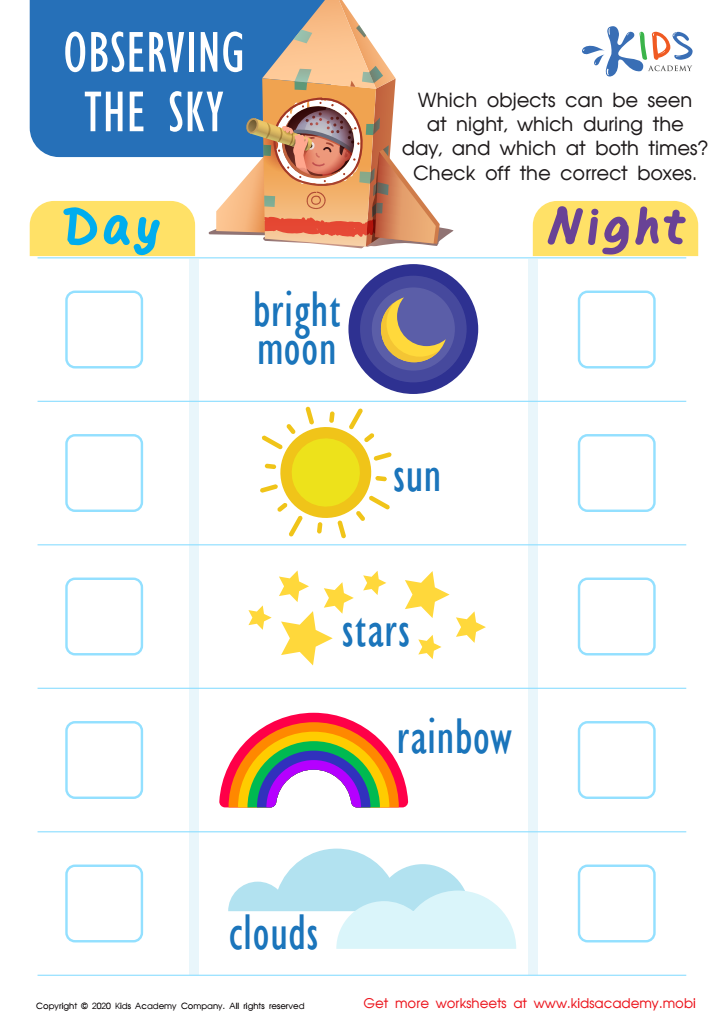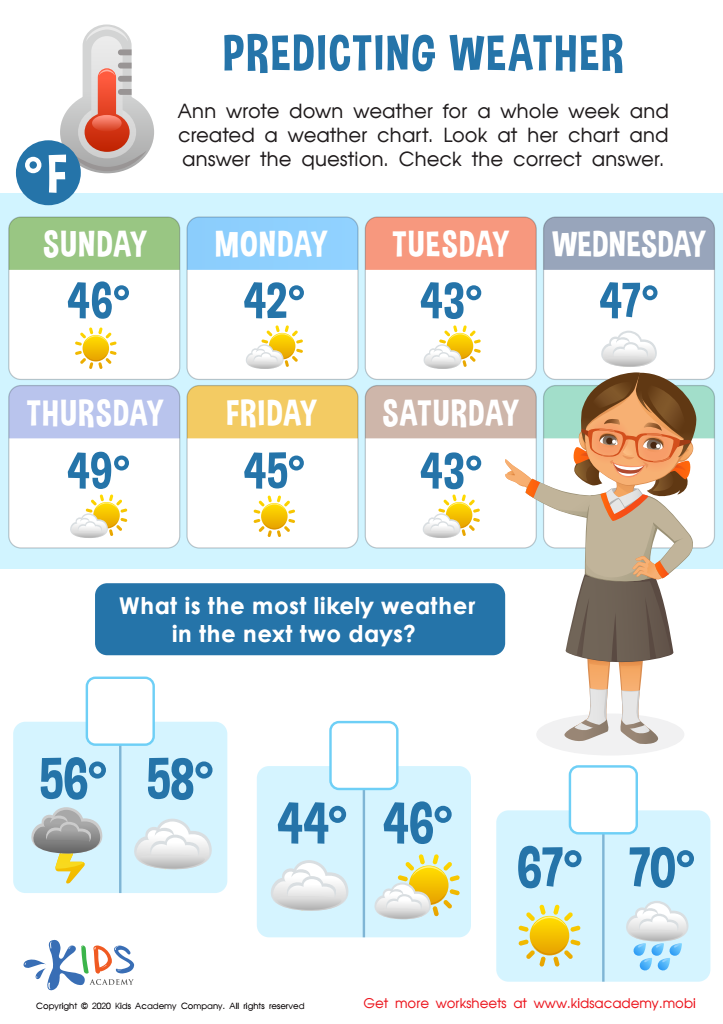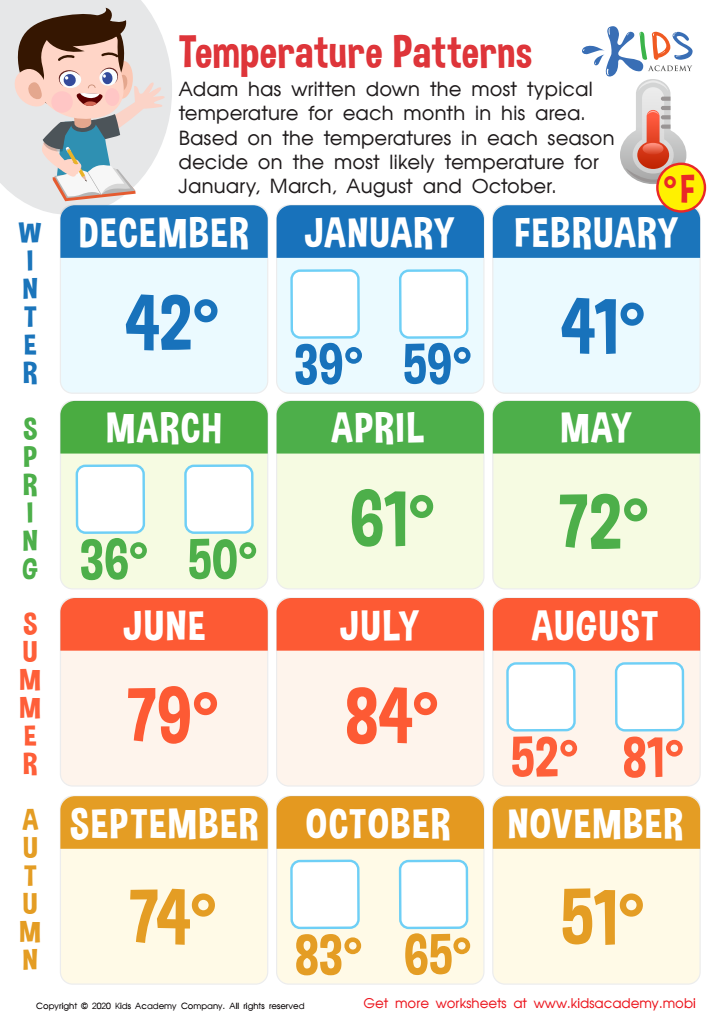Observing Patterns and Making Predictions - Lesson for Grade 1, Chapter - Space
In the lesson "Observing Patterns and Making Predictions", first-grade students embark on an engaging journey through the wonders of space, as part of their Science curriculum. This lesson is designed to cultivate skills in observation and prediction, key aspects of the scientific method.
Students will start with the "Observing the Sky Worksheet", where they will learn to notice patterns in the day and night sky, understanding the cycle of the sun, moon, and stars. This foundational knowledge is pivotal for young learners to grasp the concept of time, days, and years, which are influenced by these celestial patterns.
The "Predicting Weather Worksheet" introduces students to basic meteorology. By observing cloud formations and wind directions, students will make simple weather predictions. This activity emphasizes the importance of observation in forecasting, a crucial skill in planning daily activities and understanding environmental changes.
Through the "Temperature Patterns Worksheet", learners will discover how temperatures change with the time of day and seasons. Recognizing these patterns helps students understand the broader concept of climate and its impact on all life.
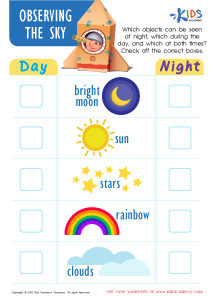
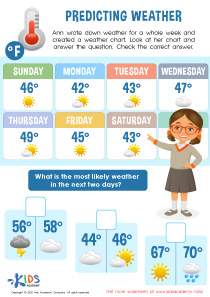
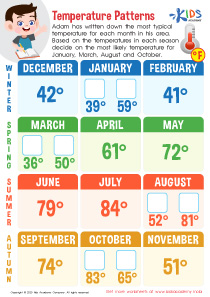
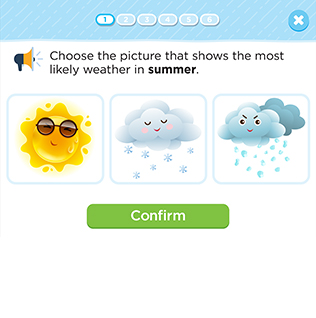
-
Activity 1 / Observing the Sky Worksheet
Look up to the sky. What do you see? A rainbow? Some clouds? Maybe the moon? What we see when we go outside and look up can vary based upon whether it is day or night. At night we see the stars and moon, while we see the sun and clouds throughout the day. Review this important science concept with your little learner by completing this fun and colorful worksheet from Kids Academy! Simply sort and check off the objects that can be observed by night or day while going down the column in the center of this fun-filled page!
-
Activity 2 / Predicting Weather Worksheet
The weather can often be predicted when observing its patterns! Use this helpful weather worksheet to help your little scientist predict the weather based upon previous observations. While working on this colorful page, students will practice analyzing data to make a scientific prediction based upon what they noticed. After completion, talk with children help them explain their responses to drive the lesson home.
-
Activity 3 / Temperature Patterns Worksheet
Depending on where your family lives, you may be able to expect particular temperatures based upon your climate and the time of year. In many places in America, this means it is colder in the winter, and hotter in the summer. In this science worksheet, a cute character named Adam has recorded some data based upon the temperatures in his area over a few months. Help your child to analyze his data to predict the temperatures for one month in each season. Check the box next to the correct temperature in each row to complete this tricky worksheet!
-
Activity 4 / Patterns and Predictions - Quiz
In this quiz students will demonstrate their ability to identify patterns in the world around us.
